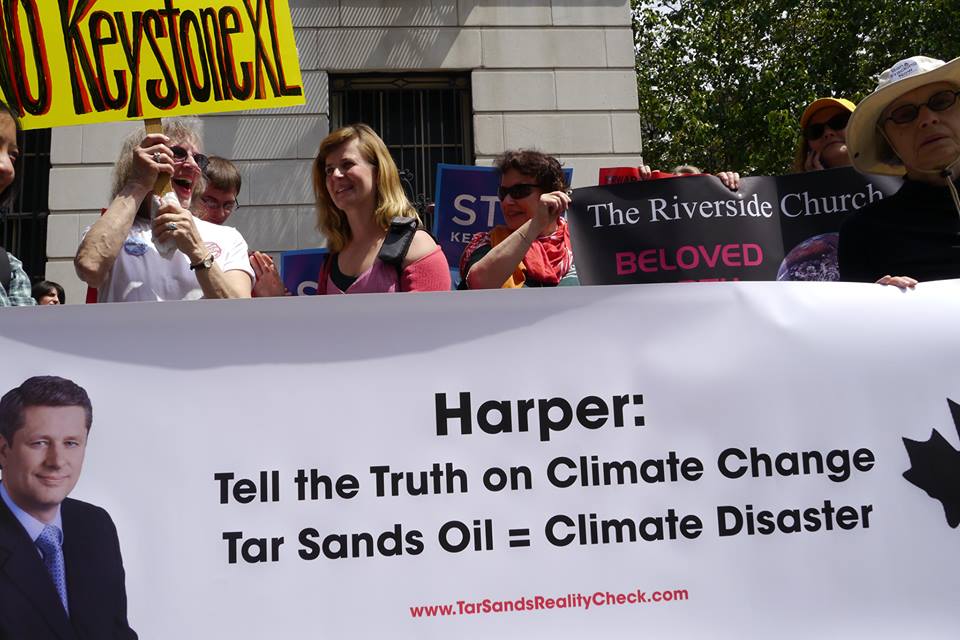Stephen Harper visited New York City to give a speech pushing for the United States to approve the Keystone XL pipeline project. The climate action group 350.org organized a protest outside Harper’s event, issuing the following statement.
The Big Apple proved to be an unfriendly landing spot today for Canadian Prime Minister Stephen Harper, whose sales job for the Keystone XL tar sands pipeline was interrupted by scores of climate activists who want President Obama to reject the pipeline and for Harper to re-commit Canada to confronting climate change.
An estimated 100 activists greeted Harper before his visit to the Council on Foreign Relations with a large banner that read “Harper: Tell the truth on climate change. Tar Sands = Climate Disaster.” On Tuesday, over 500 people met President Obama here to ask him to reject the Keystone.
“Harper is here to sell tar sands oil and his country’s record on dealing with the climate crisis but Americans are skeptical of both and for good reason,” said 350.org spokesperson Daniel Kessler. “The US is cutting its emissions while Canada’s are rising. Tar sands expansion will stall progress in both of our countries and concerned citizens are speaking out.”
One day before the prime minister’s trip south, prominent scientists and economists wrote to Richard Haass, President of the Council of Foreign Relations, to warn him that “the Canadian government continues to mislead the U.S. and international public into believing Canada has an effective and credible climate plan and that they have regulatory systems in place to manage the impacts of oil sands development. This is not the case.”
Indeed, Canada has a dismal record on climate change under Harper’s leadership, which includes:
• pulling out of the Kyoto Protocol in December of 2012.
• being on pace to not only miss its target of an emissions cut of 17% below 2005 levels by 2020 but to actually grow emissions by 2 percent by the end of this decade.
• actively facilitating the growth of the tar sands industry, whose stated goal is to increase output to over 9 million barrels a day of the world’s dirtiest oil–tar sands crude.
• and taking an axe to funding for environmental and climate research budgets, including shuttering one of the world’s top Arctic research stations for monitoring global warming.
“Canada is now recognized as an international laggard on climate and it’s due to its extreme growth of tar sands development,” said Danielle Droitsch, Canada Project Director, NRDC. “Another trip to the U.S. promoting this dirty industry doesn’t help Canada’s cause. Years of investing in greenwashing PR campaigns haven’t done the trick—at this point only real action will make the difference.”
To push back on misinformation coming from Harper’s government and the tar sands industry, national and international economists, scientists and academics including Dr. Danny Harvey from the University of Toronto and John Abraham from University of St. Thomas School of Engineering have come together to launch TarSandsRealityCheck.com, which presents the 25 most important facts people need to know about the Alberta tar sands. The facts on the website reflect the best available scientific data, drawing on government, industry and academic sources.



